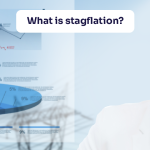Backtesting is a critical step in refining a trading strategy before deploying it in live markets. By applying your strategy to historical market data, you can evaluate its potential performance, including profitability, risk exposure, and reliability under various conditions. This process not only boosts your confidence in the strategy's effectiveness but also highlights any weaknesses, enabling you to refine and optimise your approach.
Conducting thorough backtests is vital for traders looking to invest in the share market or use an online trading platform. They provide useful insights that can enhance decision-making and increase the chances of success.
Effective backtesting starts with a well-defined trading strategy. A vague or inconsistent strategy will lead to inaccurate results, so it is crucial to ensure that your strategy has clearly outlined rules for entry, exit, risk management, and trade size.
Before you begin the process, it is important to ensure that you have access to the necessary tools and data. Backtesting typically requires historical price data and a platform or software that enables you to simulate trades. Many online trading platforms provide backtesting features, and specialised software tools are also designed for this purpose.
When choosing a platform, ensure that it offers the following:
Now that you have a strategy and the necessary tools, you can begin backtesting. Below is a step-by-step outline of how to backtest trading strategies:
The first step in the backtesting process is to choose a time period and asset class for your test. The time period should be long enough to cover different market conditions, such as bull markets, bear markets, and periods of volatility. This will give you a more comprehensive view of how your strategy performs in various scenarios.
Similarly, the asset class should align with your trading objectives. Whether you are trading equities, commodities, or currencies, ensure that your backtest focuses on the asset class for which your strategy was designed.
Once you have selected the appropriate time period and asset class, apply your strategy’s rules to the historical data. This involves "trading" on paper as if you were operating in real time. Each time your entry and exit criteria are met, record the trade. Remember to take note of transaction costs, as these can impact the overall profitability of a strategy.
After completing the simulated trades, it is important to analyse the results carefully. A successful backtest will provide performance metrics such as:
By reviewing these metrics, you can determine whether the strategy meets your expectations and objectives.
It is unlikely that your strategy will perform perfectly in the first backtest. You may identify weaknesses, such as periods of underperformance or high levels of risk. Use this information to refine and optimise your strategy. This may include adjusting the entry and exit rules, modifying the risk management plan, or testing alternative indicators.
However, be cautious of over-optimisation. Tweaking the strategy too much can lead to "curve-fitting," where the strategy becomes too tailored to past data and may not perform well in real time.
Backtest trading strategies offer several advantages for traders who seek to invest in the share market using an online trading platform:
Backtesting is an important tool for traders looking to assess the viability of their strategies before applying them to live markets. By understanding how to backtest a trading strategy, traders can make wiser decisions, reduce risk, and improve their chances of success.
However, backtesting should not be the sole method of validation, and traders should combine it with real-time testing and thorough market analysis to ensure the best possible results.

Revisiting the Gold-Silver Ratio Amid Silver's Outperformance
3 min Read Dec 22, 2025
Midcaps: Sweet Spot or Danger Zone? | What HSBC MF’s Cheenu Gupta Thinks | Ventura Spotlight
3 min Read Dec 17, 2025
Understanding Option Pin risk near expiry
3 min Read Dec 12, 2025
EPS in the Stock Market
3 min Read Dec 12, 2025
What is stagflation?
3 min Read Dec 10, 2025